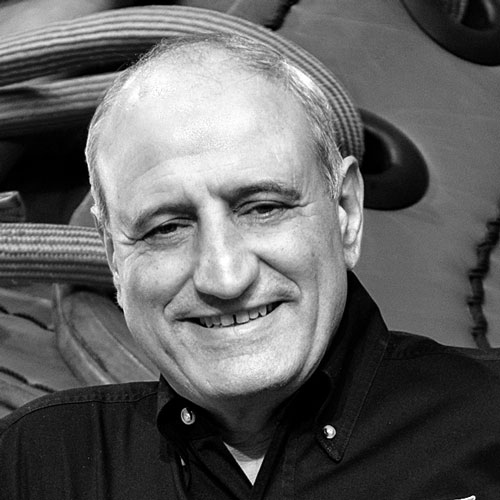In an industry where the competitive edge and standards of relevance are as fluid and evolving as the product itself, innovation is a necessity. WGL Holdings and its subsidiary, Washington Gas, are among the United States’ leading providers of clean, efficient, and diverse energy solutions. The public utility company consciously seeks to distinguish itself in the energy industry through its use of innovation and creativity.
Gautam Chandra, WGL’s senior vice president of strategy, business development, and non-utility operations, fully embraces that innovative spirit. His unique leveraging of finance serves as the critical catalyst for the Washington, DC-based company’s impressive growth. After only four years on the solar energy scene under his guidance, WGL claims more than $500 million in assets.
“My view of finance is on the strategic side,” Chandra says. “The way I interact with it is to really understand financially what the key drivers of value are for the company.” He evaluates the structure of the company, figuring out how to configure the transactions, businesses, and growth areas in a distinctive way that will ultimately get rewarded by investors in the stock market.
To inform his growth efforts but stay out of the weeds, Chandra collaborates regularly with WGL’s chief financial officer Vincent Ammann, who oversees the accounting and finance functions. “We’ve created matrix teams that chase after new business opportunities,” Chandra says. A deal or business development team will comprise members from development, sales, strategy, finance, accounting, tax, and financial reporting. This ensures that the team works together to chase after projects from the very beginning, instead of involving finance toward the end.
The partnership has proven effective. Several years ago, Chandra and his team decided to pursue renewable energy as a key component of the company’s future. He worked with Ammann to determine how to structure solar investments that differentiated from other industry practices. At the same time, the team structured the initiative in a way that added value to the company and demonstrated growth to investors.
Naturally, investors shy away from volatility, Chandra says, so the challenge is to invest in projects that have the cash flow characteristics that contribute to immediate dividend growth. “The way we structure our projects is so we can recognize earnings earlier,” he says. “Because that’s ultimately what’s rewarded by shareholders.”
One way in which the two men balance each other is in the realm of risk, says Chandra. While Chandra admits to a higher tolerance, Ammann’s background makes him more prone to mitigation. “Part of our success has been that good combination of being willing to expose ourselves to areas where taking more risk may provide more return,” Chandra says. “But also doing everything we can to manage every risk we can see that we may be exposed to.”
For example, Chandra and Ammann both chose to test the waters after deciding to pursue solar, rather than spending the money to hire a consulting firm to conduct an analysis. This decision took shape as a small, half-million-dollar project that involved installing solar panels on a warehouse roof for an existing customer. “We said, ‘Okay, we’re going to do this project, we’ll learn a lot of from this in terms of how to structure these things, and whether there are real legs behind it or not,’” Chandra says.
Using a twenty-year power purchase agreement, WGL retains ownership and operation of the installation, while the customer saved money on its energy spending and reduced their carbon footprint, without having to put out any capital. “In a very short period of time, we became confident about both the market scope of this opportunity and how we’d do it in a way that would manage risk for the company,” he says. “And then we could really start scaling it.”
Yet with regard to risk, Chandra believes that an important way to filter every opportunity is to consider what actions he would take if he owned 100 percent of WGL. “I wouldn’t recommend that we pursue an opportunity if I wouldn’t want to pursue it on my own account,” he says. “Thinking like an owner is something that comes naturally for me with my entrepreneurial background and is a very important skill for creating successful outcomes.”
The United States’ advanced energy market revenue grew 14 percent from 2013 to 2014, according to the Advanced Energy Now 2015 Market Report prepared by Navigant Research for the Advanced Energy Association. Chandra has positioned WGL to be at the forefront of this trend, using a three-pronged growth strategy that includes utility, distributed generation, and natural gas midstream. The latter two are seeing heavy investments from the company and have been the last few years. In particular, Chandra is excited about distributed generation. “I think that’s almost an unlimited growth opportunity for us,” he says. “And it’s one of the key drivers of the market transformation.”
WGL’s adaptability is crucial in the energy industry, and Chandra is already anticipating future trends. “I think over the next fifteen to twenty years, how we think about energy in this world, and our country, is going to change very significantly,” he says. “A lot of the established industry is going to be forced to transform.” Specifically, the grid will have to change to accommodate a more distributive world, in which a significant increase of energy will be generated and consumed. “I want to be known as one of the guys that really helped drive that transformation,” he says. “Hopefully WGL comes out as one of the winners.”

